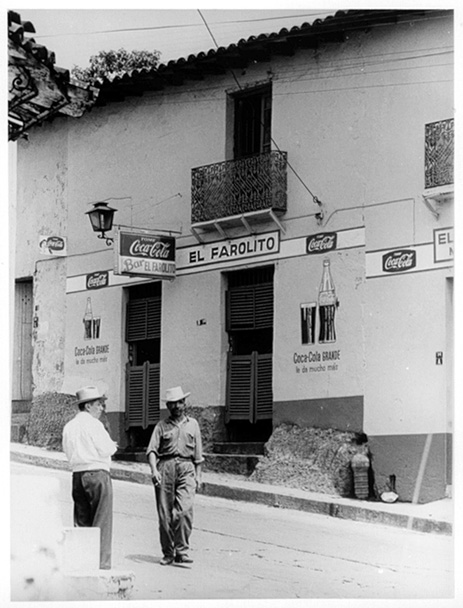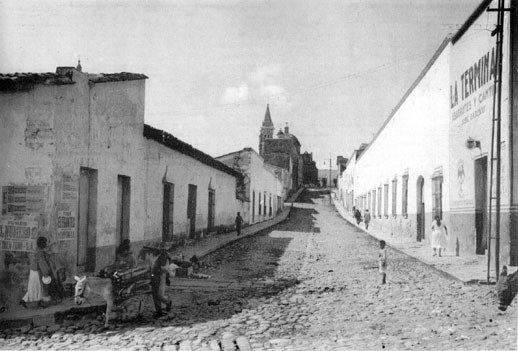Lowry's Quauhnahuac is replete with cantinas whose real-life origins maybe found in various parts of Cuernavaca and Oaxaca.
The labyrinthine cantina in Cuernavaca |
Another Cuernavacan Farolito |
The modern Farolito in Oaxaca |
The Farolito, pictured at right, is actually a cantina in Oaxaca. Within stumbling distance of the Hotel Francia, it became for Lowry and the Consul a symbol of the lighthouse that invites the storm, the sanctuary and paradise of his despair. The Oaxaca Farolito is Lowry's primary one, but there were two others by that name in Cuernavaca, and the labyrinthine structures of another cantina in Cuernavaca, at the junction of Calles Salazar and Humboldt (close to Lowry's bungalow) contributed to the chinese-box effect.

Lowry has added "El Bosque" to accentuate the dark wood theme; but the Terminal cantina in Cuernavaca (named for its proximity to the bus stop, not for the ominous reasons that Lowry relished), seen here in the right foreground, was in 1938 near the Cortés Palace at the intersection of the Calles Juárez, Hidalgo and Las Casas. From Sergio Barrera, Crónicas de Cuernavaca, 81.

-01.jpg)
-01.jpg)

